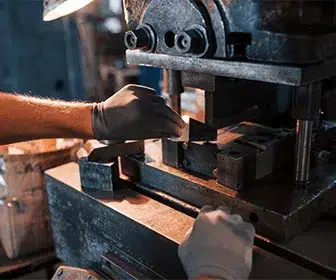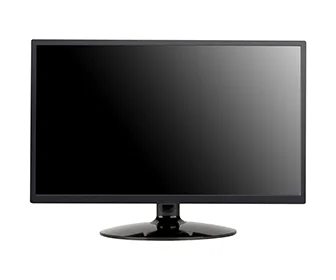Metal fabrication plays a crucial role in modern manufacturing, especially when it comes to creating prototypes and supporting low-volume production. Sheet metal fabrication stands out for its versatility, strength, and precision.
This article provides an overview of sheet metal fabrication processes, highlights ARRK’s expertise in the field, and explores the different range of applications it supports across various industries.
WHAT IS SHEET METAL FABRICATION?
Sheet metal fabrication refers to the process of cutting, bending, and assembling thin metal sheets to form components and products. Sheet metal companies offer steel sheets, aluminium sheet, copper sheets, and titanium sheets are commonly used in this process due to their durability and structural properties. The sheet metal, typically ranging in thickness from 0.5 mm to 6 mm, can be shaped into a variety of forms through techniques such as:
Cutting
- Laser Cutting
One of the most popular cutting methods, laser cutting uses a high-powered laser beam to cut through metals with extreme precision. This process creates clean edges and is ideal for intricate designs or components with tight tolerances. - Shearing
Shearing involves using a blade to cut through sheet metal, similar to how scissors work on paper. This method is effective for making straight-line cuts and is widely used for trimming or resizing larger sheets into smaller pieces. - Waterjet Cutting
Waterjet cutting uses a high-pressure stream of water, sometimes mixed with an abrasive substance, to cut through sheet metal. It is highly precise and can cut through thicker materials without generating heat.
Bending
- Press Brakes
A press brake machine applies force to a sheet of metal, bending it along a straight axis. This technique can form various angles, including sharp bends or gentle curves, depending on the design.
- Metal Rollers
Metal rollers are used to form sheet metal into curved or cylindrical shapes by passing the material through a set of rollers.

Forming
- Punching
In punching, a die is used to punch holes, slots, or other cutouts into sheet metal. This method is fast and efficient for creating repetitive patterns or perforations in a part. - Stamping
Stamping uses a die to press shapes or forms into sheet metal. It can be used to create detailed designs. - Deep Drawing
Deep drawing is where a sheet of metal is stretched into a desired shape, often creating parts with significant depth.
Joining
- Welding
This process where heat is applied to the edges of two or more metal parts, fusing them together. Different types of welding (such as MIG, TIG, or spot welding) are used depending on the materials and application. - Riveting
Riveting involves using rivets, which are permanent mechanical fasteners, to join metal parts together. This technique is common in applications where welding is impractical or where disassembly is required for future maintenance or repair. - Fasteners
Bolts, screws, and other fasteners provide a flexible joining option, especially in prototypes where parts may need to be assembled and disassembled multiple times. This method allows for easy reconfiguration and is ideal for assemblies that require frequent access.
The flexibility of these techniques makes sheet metal fabrication ideal for creating custom prototypes and functional parts without requiring expensive moulds or tools used in mass production.
OPTIMAL PARTS WITH ARRK’S INDUSTRY EXPERIENCE
Automotive
Sheet metal and fabrication can be applied to create car body panels such as hoods, roof and fenders. These are commonly used with steel sheets and aluminium sheets. Chassis components like cross beams and side rails provide high tensile strength. This ensures the vehicle’s frame can support the engine, passenger load, and withstand impact forces.
Components such as control arms, brackets and handles the stresses of driving, braking, and turning. Fuel tanks and battery housings which are important for electric vehicles to protect the component from external impacts or heat.
Consumer Appliances
This process is ideal for creating enclosures and housings that protect the internal systems and components of appliances. Devices like microwaves, washing machines, and ovens rely on these enclosures to securely house all essential operating systems.
For example, TV panels are made using sheet metal bending to form the central frame, which supports the weight of the screen components and connects critical systems like cells and circuits. Metal casings are also used to safeguard sensitive electronic components from damage.

Medical Devices
Medical devices often require protective enclosures to safeguard sensitive electronics, ensure hygiene, and protect against physical damage. Sheet metal is versatile, strong, and has the ability to be formed into precise, custom shapes. These devices require different sizes to have the most complex systems to ensure optimal performance. To enhance aesthetics or meet unique material requirements, additional components can be produced using ARRK’s vacuum casting services.
This process is particularly well-suited for producing parts with specific functions, such as durability to withstand sterilisation chemicals during routine cleaning, as well as incorporating safety features like heat resistance or fire retardancy. There are a lot of benefits of the impact of vacuum casting for medical devices. High-quality exteriors of medical devices are essential for safeguarding internal systems and ensuring optimal performance.
CHOOSE ARRK ASIA FOR YOUR NEW PROJECTS
ARRK’s package solutions include metal sheet fabrication services for prototyping or a specific number of products require it. We will assist in every step of the process as we want your concepts to become a reality by reducing the number of operations to meet our customers’ schedule to be a successful project.
When you need new parts prototypes fabricated, you can count on our team at ARRK Asia. Reach out for a quote today!





